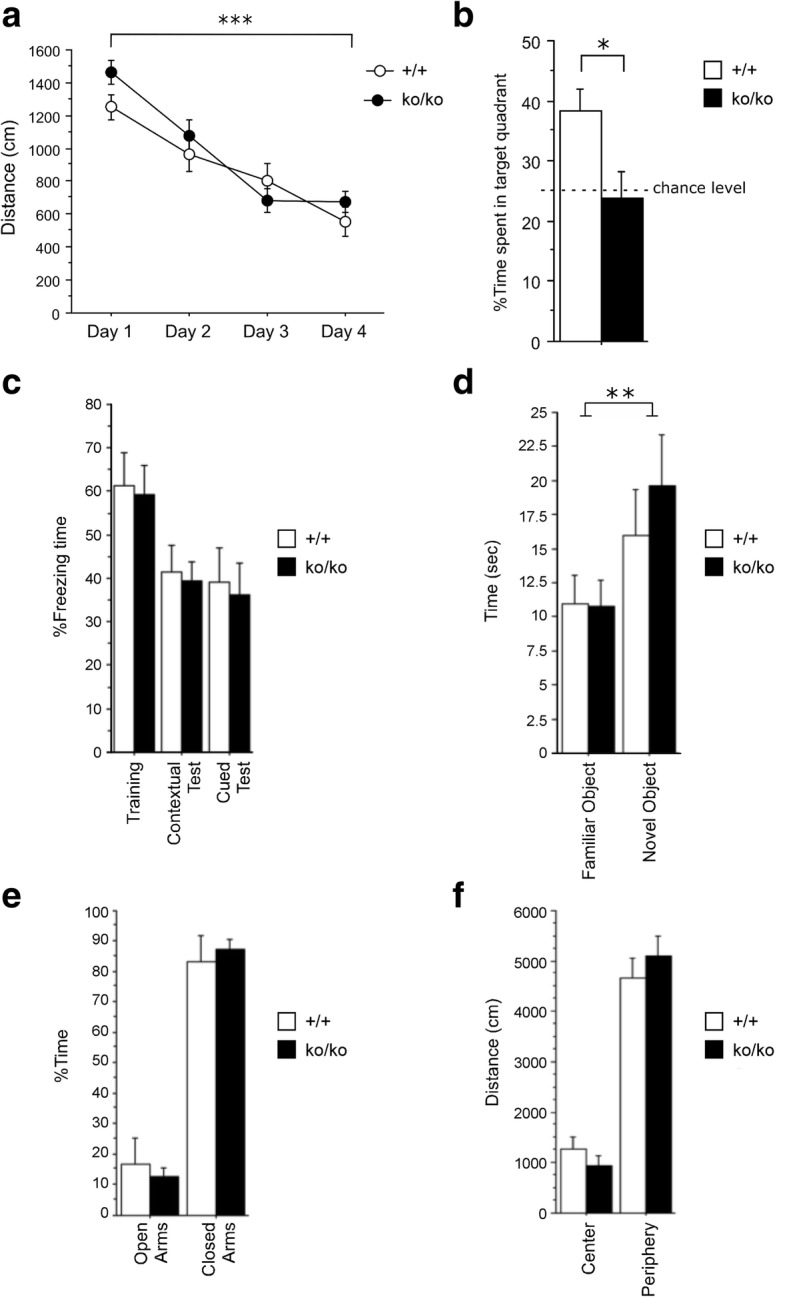Fig. 1.

The constitutive deletion of APMAP selectively affects spatial memory but not anxiety, locomotion, fear-related or independent hippocampus memories in WT mice. a, b In the Morris water maze, 9-month-old WT (+/+; n=11; 6 females and 5 males) and APMAP-KO mice (ko/ko; n=13; 6 females and 7 males) show similar escape learning during training trials (repeated measures ANOVA: time effect F3,22=45,224, *** p<0.001 Day 1 versus Day 4) (a). However, in the spatial memory probe test, after 4 days of acquisition training, APMAP-KO mice performed at a chance level in the search for the platform, showing no preference for the target quadrant compared to WT control mice (b). c APMAP-KO mice did not demonstrate a deficit in the acquisition or retention of a fear-conditioning task (repeated measures ANOVA F1, 22=0.112, p>0.05 for genotype). d In an object recognition task, both groups spent more time exploring the novel object and were able to discriminate it from a familiar object (repeated measures ANOVA F(1, 20)=13.175, ** p<0.01 familiar vs novel object, Tukey post hoc test. Genotype effect F(1, 20)=0.660 p>0.05, interaction genotype x object F(1, 20)=1.211 p>0.05). e In the elevated plus maze, WT and APMAP-KO mice exhibited a similar exploration time on the open arms (repeated-measures ANOVA F(1, 19)=3.576, p>0.05 for genotype). f APMAP-KO mice did not exhibit a reduced locomotion activity or an anxiety-related behavior compared to WT mice during an open field test (repeated-measures ANOVA F1,22=0.7, p>0.05 for genotype). Data are expressed as the mean ± SEM
